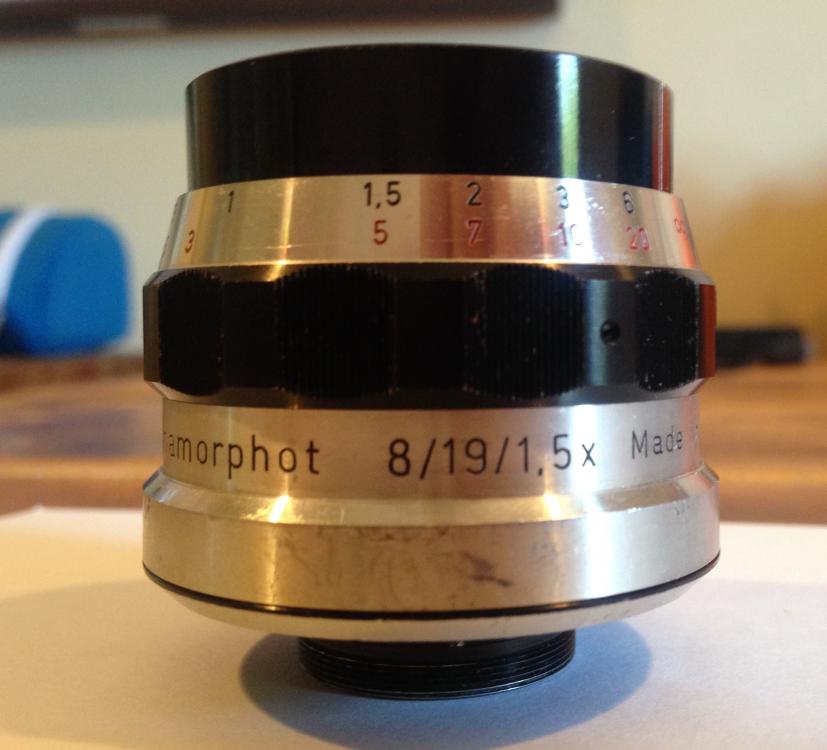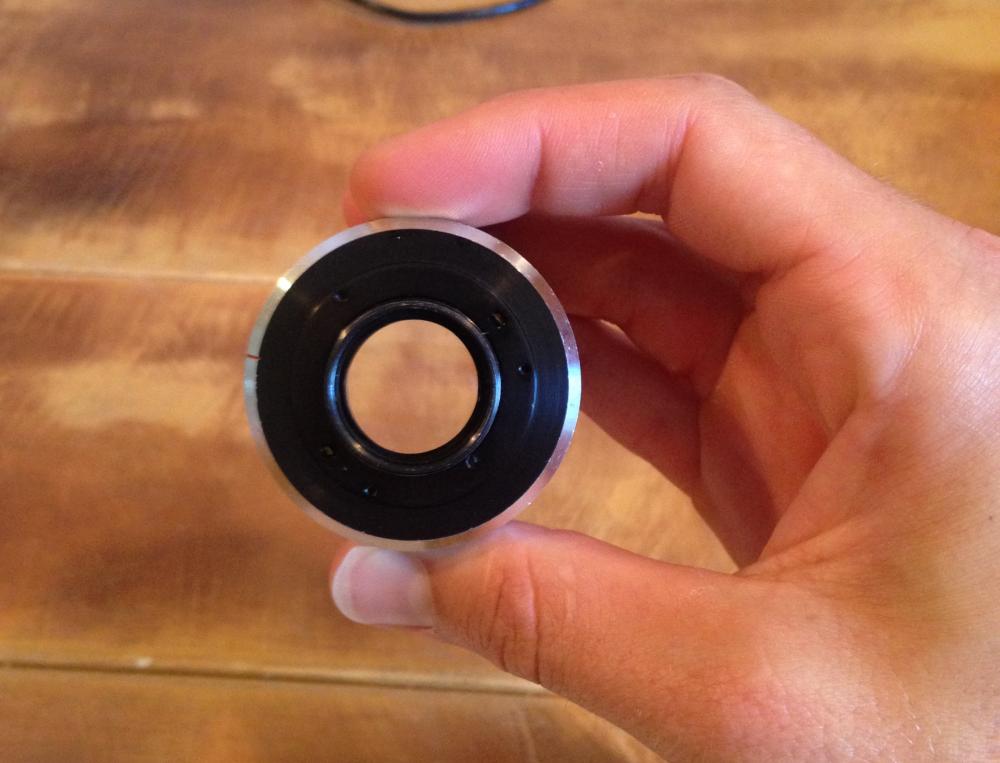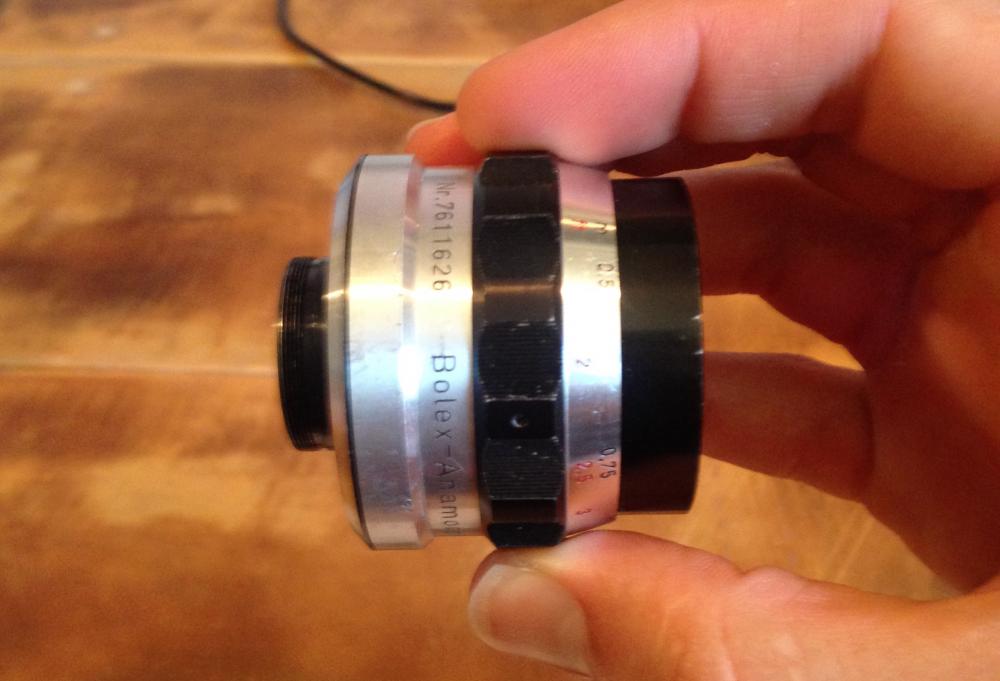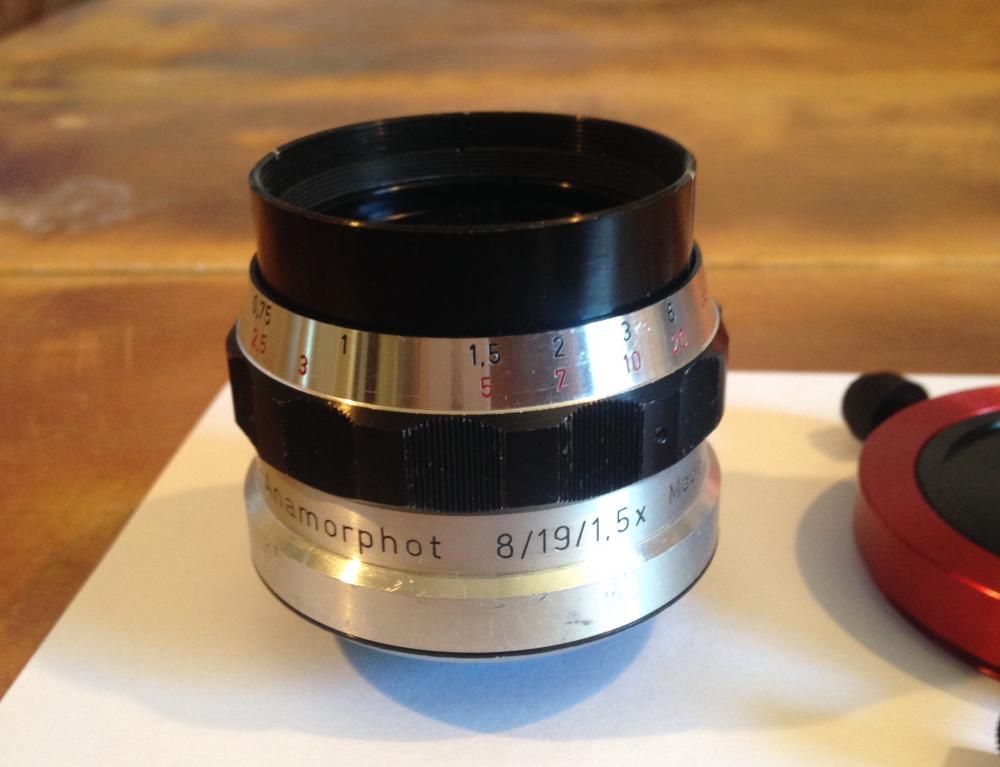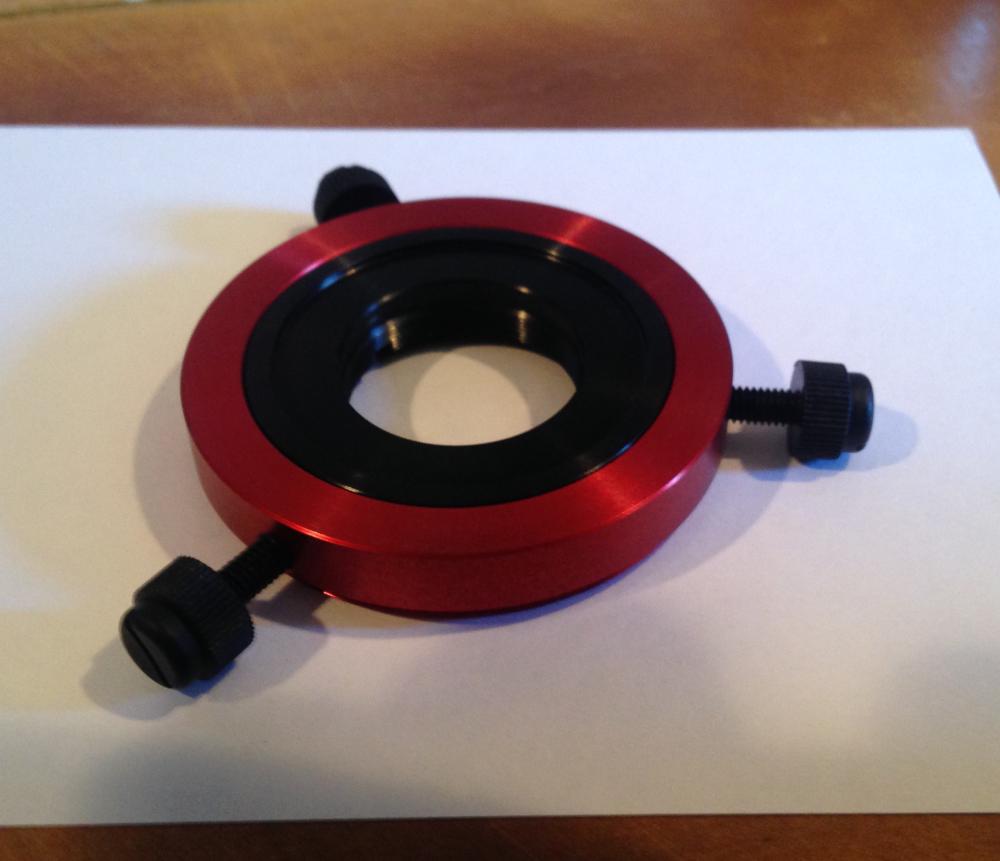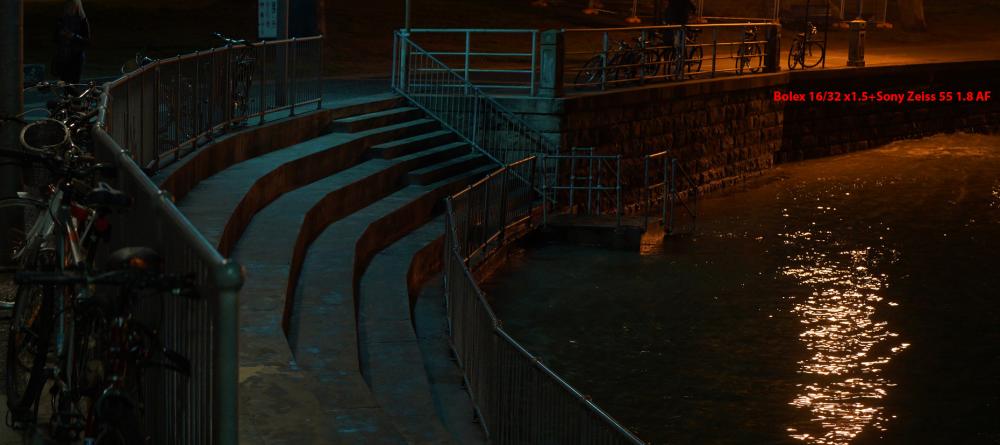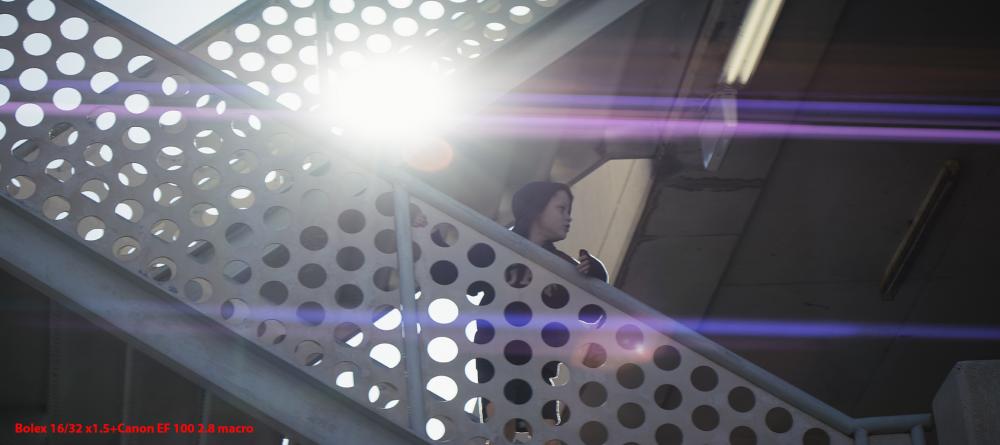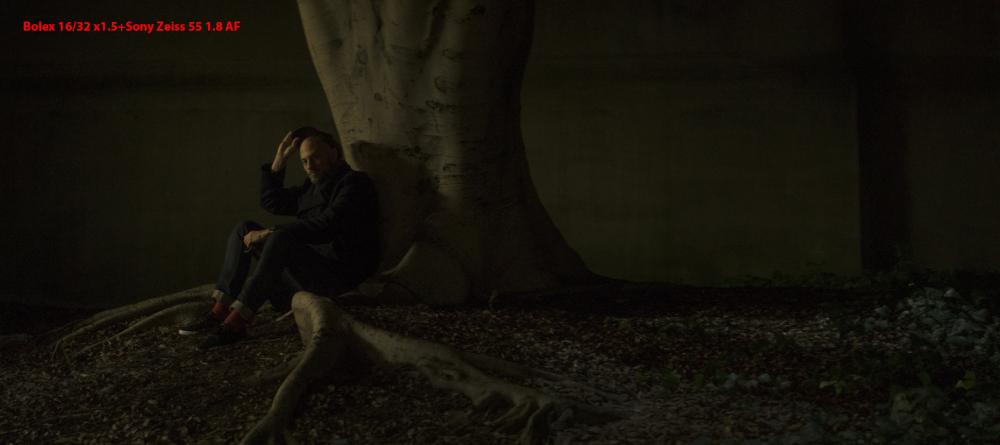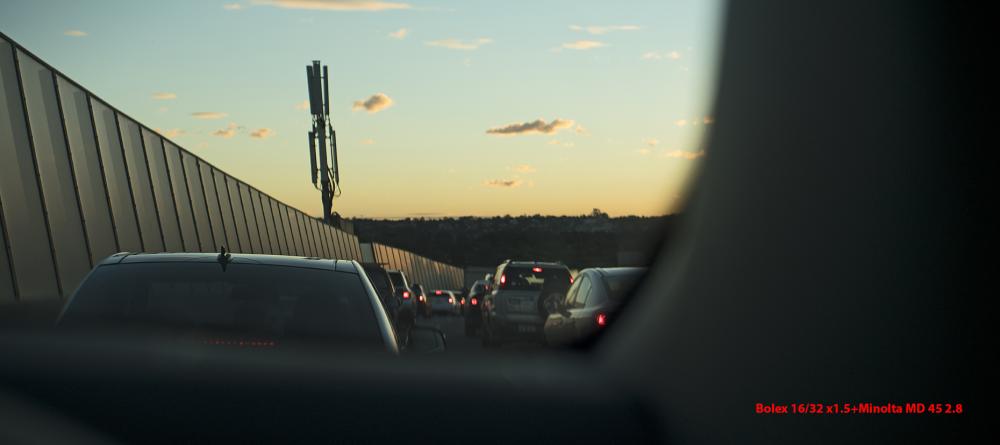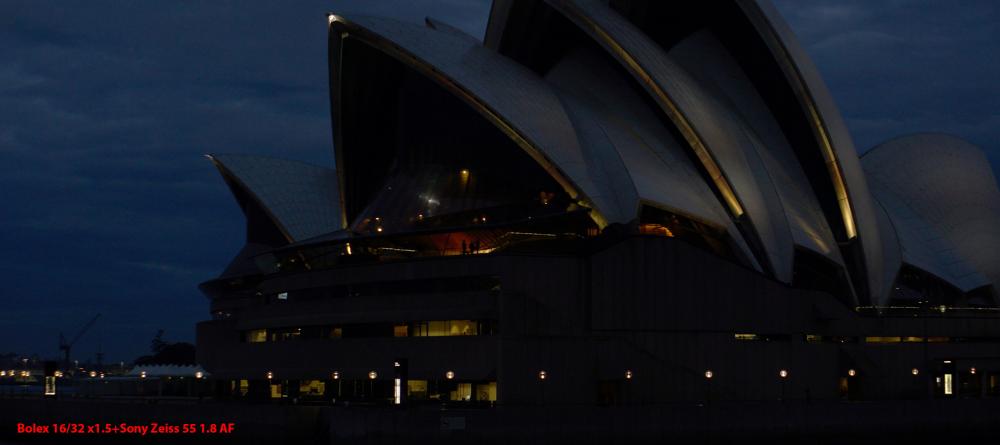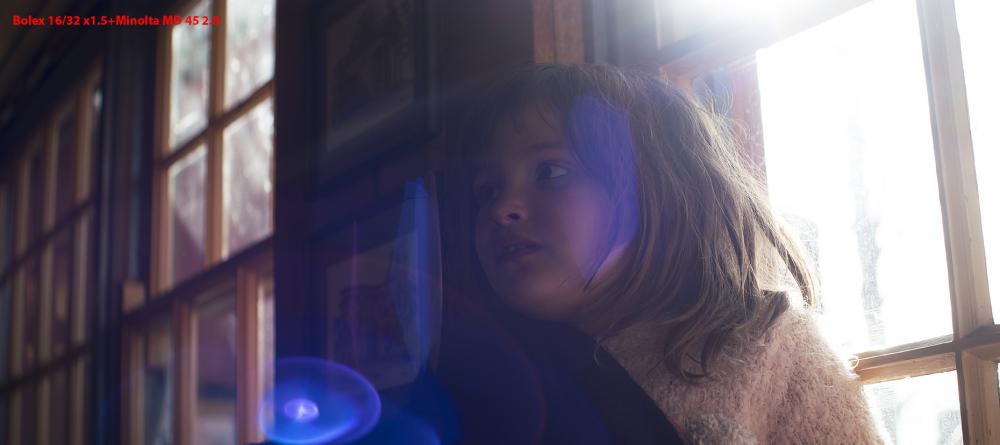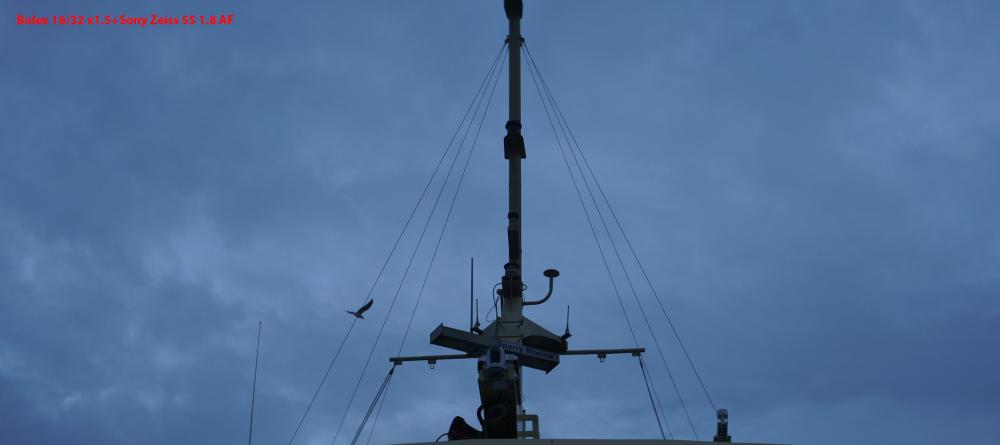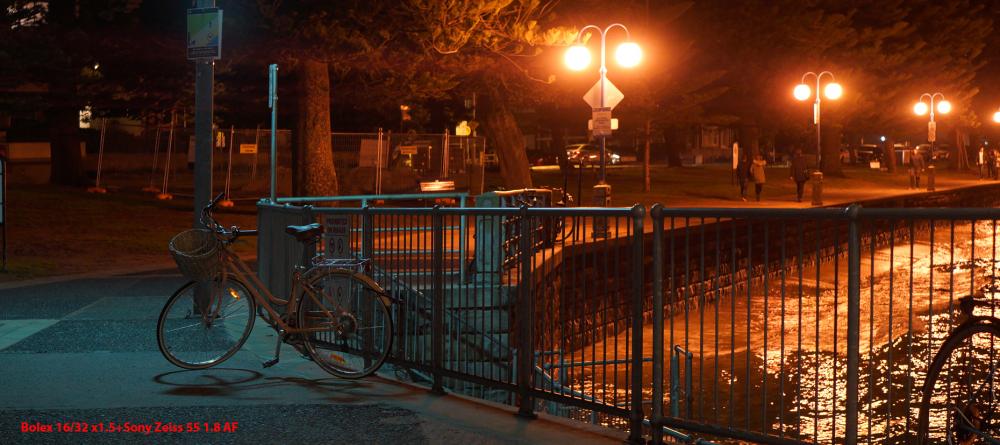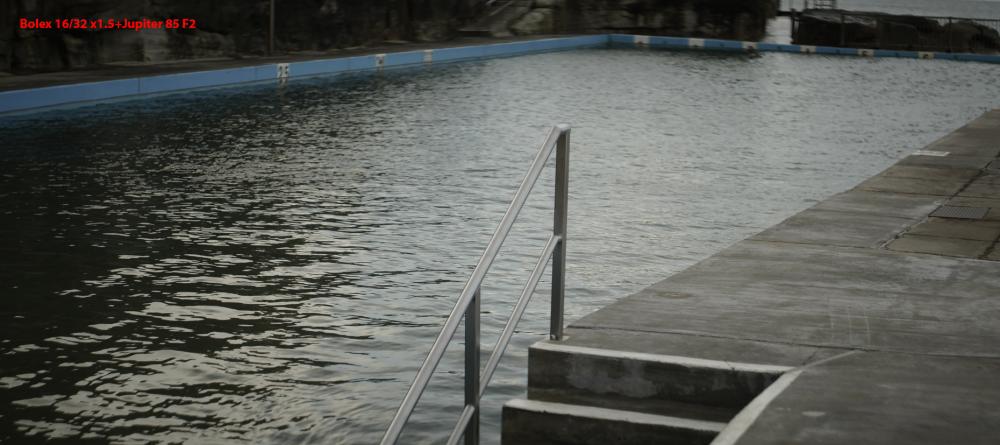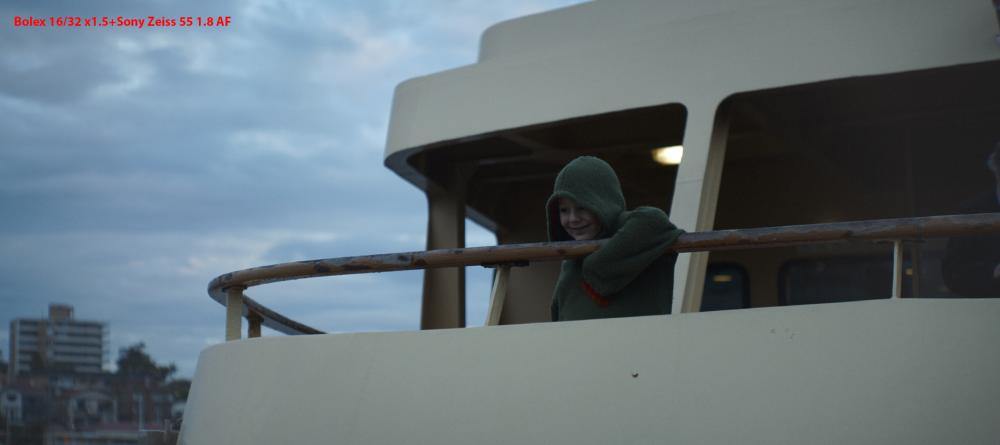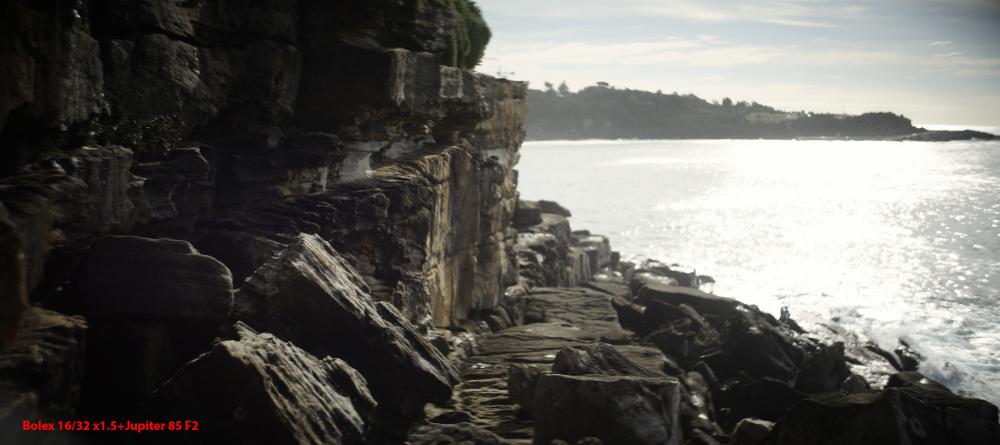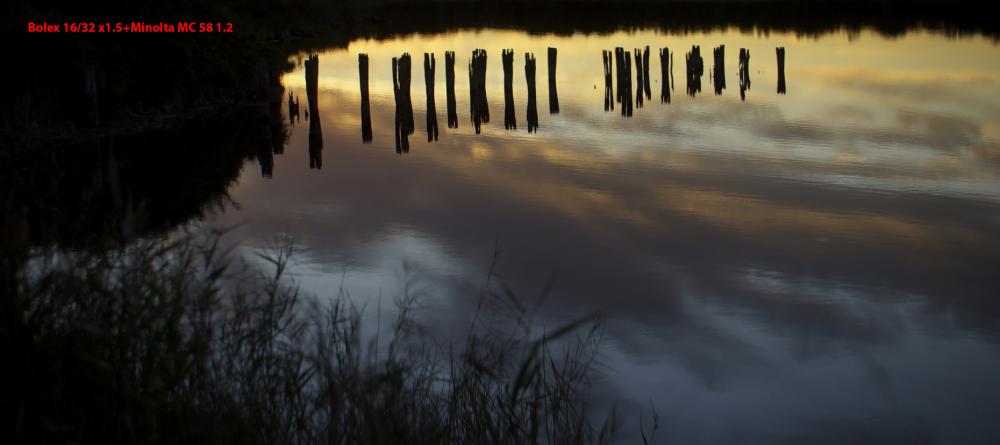Leaderboard
Popular Content
Showing content with the highest reputation on 07/19/2017 in all areas
-
In the question of this discussion; Yes, I would buy again a NX1. The only thing, I bought him last year cheaper than he is now. For semi-professional use, I have the 16-50mm S lens and I love it! For hobby, a complete anamorphic setup and soon combined with the NXL adapter.2 points
-

The Bolex-Anamorphot 16/32/1.5x thread
Dick Sweeney and one other reacted to keessie65 for a topic
I can answer... but it's actually the same as asking 'how old are you' ...you mostly do not ask that ;-) But, here we go; my setup, the Bolex 16/32 1.100 dollar (yes it can!), the HCDNA, 900 dollar, rig 250 dollar, Ultron 40mm 350 dollar. I had a Iscorama 36 and sold him. This setup is huge and weight a lot more, but the quality IMHO is much better than the Iscorama. And at least, I don't sell my Bolex ever again.2 points -
Only if shooting in a scene that would best fit a Rec709 profile. No, I haven't concluded anything! Based on some initial tests against 1 million sample colors it looks like LOG loses about 35% color in a Rec709 case. I am posting here for people to help me get to the bottom of this. I posted another quick test looking at "banding" which would be expected IF LOG lost 35% of color in a Rec709 case. Do any of you go out and buy a camera because the guy at the store says it captures the best image IF you know how to grade it? Of course not. Everyone here tests their cameras, looks for new techniques to get better images. That's all I'm doing. My acid test would be, after all the work is done, someone like @Oliver Daniel would say, "that's useful information to keep in mind"2 points
-
1DX II - Dynamic Range without Log
jcs and one other reacted to UncleBobsPhotography for a topic
The dynamic range in the clip looks good, but I can't focus on anything but the out-of-sync audio.2 points -
Freedom (and respect)
Katrikura and one other reacted to HockeyFan12 for a topic
I've often disagreed with you, but I agree with you here. Your argument is in the spirit of the ongoing "use cheap gear," thread. You should use the medium in an ontologically sound way. Video is fast and ephemeral. Film is slow and physical. Good videos use the difference to their advantage and don't apologize. In recent history but before video's ubiquity, Zodiac used video very well. Not by apologizing for a smaller sensor or whatever else, but by allowing Fincher to shoot 100s of takes and comp together just the ones that suited that particular film. After the more fringe artists you cite but before the Alexa's prominence, a few other other artists used video unapologetically well: Channel 101 (look at the illustrious alumni from that group of great storytellers)–they also influenced Awesome Show and the SNL Digital Shorts; Dogme 95; Chronicle (very good genre film); and even the toweringly innovative cult classic Werewolf: The Devil's Hound, which used tons of coverage to more than make up for a lack of resources elsewhere. Video is cheap, cameras small. They owned it. A+ Video is not film. It's not worse. It's not better. It is different. Let it be different. Embrace it. If it's your medium, use it. If it's not, shoot film, which I love the hell out of. To some extent I think film schools are harmful in our era. They teach you the old way, which was great... but now we're in a faster moving age. Even Vine videos are a far more worthwhile medium than most gave them credit for being. A lot of good filmmaking in a given six seconds. And horses for courses. I can see why JJ Abrams shot film on Star Wars. It made sense. It's nostalgic. I can see why a lot of art films are shot on 16mm. It's physical. As a viewer, I mostly far prefer it. But if digital is what inspired you to get into production, don't apologize. Shoot the hell out of it. It's its own thing. Your voice is your own. Shoot video as video, not as an apology for film, and you've taken a step 95% of A list DPs refuse to. It clips. It wobbles. Love the wobble. Love the clip. Love the pause cut. Love the meme. Love the vloggers. Love snapchat. Love vine. Love what you do, whatever you're doing.2 points -
Oh man...You made me miss my D5300 Now i have a G80. The PNGs look really nice.2 points
-
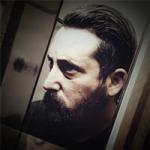
NX1 Film
ESGI Media and one other reacted to Matthew Hartman for a topic
These images prove a few things about the NX1 and many cameras in general and I'm super happy you shared these to help me prove something I tell colleagues all the time. 1.) The secret to getting NX1 footage to look warm and or filmic to is first turn the sharpness down in-camera to -10. Samsung purposely uses sharpening algorithms in many of their products because their user research tells them that most people are attracted to it. It's the same for their tendency for bold contrast and saturation. While this is good for large screen 4k TV screens, it will make your footage look like video or broadcast quality. Even with sharpness essentially turned off, the NX1/500 image still is one of the sharpest images known to the entire industry. I implore anyone to test this assertion out against any Arri or RED. There are times I will even put a fast blur on my on my footage in Premiere at .25/.5 just to give it that "emulsive" look. Some people may find the sharpening in the NX1/500 a turn off, but personally I like having the latitude. You can always reduce sharpness but it's very difficult to add sharpness to blurred pixels. 2.) The art of lighting separates amateurs from professionals. The sets of images above demonstrate this beautifully. This aspect has very little to do with the camera, if at all. Lighting your scene should be part of the narrative. It should tell it's own story while being a part of the bigger picture. In the whole high ISO craze Sony introduced to the industry, I feel many cinematographers or videographers have gotten lazy or simply forgotten the art of lighting a scene. It's more than just about proper exposure. Darkness is as much a narrative as light. 3.) Composition and setting the scene. This not only includes principles like the rule of thirds, but also wardrobe and even actor's micro expressions. Even in these stills you still get a sense of the character's motivation and persona. Trust me, even the crappiest digital cameras today can technically produce a better IQ than film cameras of even the 80/90s, but that means nothing if there's no story and art direction. It's not really all about the camera. It's about the narrative and everything in concert that supports that, which the camera is only part of. I also wanted to add that no general audience would view this film (or stills) and think it didn't come from a camera the size and cost of a two-story house. If the movie is successful, the only thing they'll being thinking about is the emotional impact the story had on them. Good film quality is exactly what you DON'T think about.2 points -
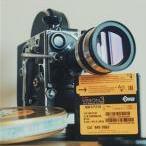
The Bolex-Anamorphot 16/32/1.5x thread
Dick Sweeney and one other reacted to SigurdW for a topic
A little film from my latest trip to the home-place of my girlfriend, the Lofoten Islands. Brought along the 5D Mk3, Bolex 16/32 + HCDNA and two new little gems: The Helios 44-2 Silver, which I have to say I did not become too fond of coming from the 44M. Might have just been an unfortunate sample, but way softer than my 44M as well as a blue-ish tint. And the Jupiter 9 Silver, which I absolutely loved. Nicest colours of my assortment, not to mention impressive sharpness wide open (read a lot of hate on that part on-line). Shot in 1748x 618 (or something) stretched to 2160x7782 points -

Should I buy a Samsung NX1 now May 2017???
Marco Tecno and one other reacted to Matthew Hartman for a topic
Yep, I was afraid of this very occurrence myself. So many NX1 pros I respect, and in some cases were responsible for turning me on to the NX1 jumped ship not long after Samsung sort of vanished. I still can't find an official statement from Samsung on closing the market in North America, if anyone has that please share it with me. I'm talking official statements from Samsung, not speculative articles. Their US based website STILL advertises most of their NX cameras, and lens lineup. First it was the Sony A6300/6500 hype which honestly didn't last very long due to Sony's notorious overheating issues, which quickly reared it's ugly head. In a manner of weeks I saw very excited users reduced to pulling out their hair at the end of it. Now the new wave is all about the GH5 and Fuji. And although some features of the GH5 sounds absolutely tempting, at the end of the day it's m4/3 and that's a hard sell for me and my purposes. I need to do some more research on Fuji. I've held on to my NX1 since I purchased the system in late 2014 and I'm happy I haven't fallen for the hype because I've witnessed a lot of people jumping ship, yet holding onto and still quietly using their NX1s to this day. I know it's serving my and my client's needs, and seem perfectly satisfied with it's output. I feel "if it's not broken, why fix it"? I think generally, many of us are easily dazzled by the latest shiny gadgets, and these manufactures understand this. I believe the NX1 was an experiment on Samsung's part, a "one off" if you will, backed by their insane R&D powerhouse. I think generally Samsung has been a bit underestimated everywhere around the world besides South Korea, and definitely within the photo/video industry at the time of the NX500/1's debut. However, to my eyes they are one of the top companies leading the charge in innovation with the capitol to back it up 10-fold. As big as Canon and Nikon are as household names in the photo/video industry, Samsung as a brand, and as a whole company towers over them and most others. It's not hard for me to understand how capable they are that they could release a camera in 2014 that stills holds up almost 4 years later. Nor is it a surprise to me how some have regretted selling their NX gear because of the fear of becoming obsolete and irrelevant, and the impulse to posses the latest badge of honor. Yet, even in the face of buying back into a seemingly dead system, they still want their NX gear back. That's a pretty strong testament. I hope when the next "NX1" comes along the industry takes it more seriously. I think in a couple years we're going to see something revolutionary and ahead of it's time, like the NX1, which I feel will actually justify buying into that new system. I just don't feel there's been that huge of a leap in features to price point in the current offerings. It's as if the technology curve has crept incrementally. That's not a stab at the GH5 or Fuji, or Sony and the rest. It's just a peek into value vs. cost. The NX1 has spoiled many of us in this regard. I don't know what you guys are talking about when you say you can find cheap deals on Samsung NX1 products. The prices I see online are almost doubled what they were when the camera was first released. I saw an S lens for roughly $3,000 USD on Amazon tonight. That certainly wasn't the retail price 3 years ago, it was much less if memory serves me right. This is a recent article on the front page of this site: "Nikon struggling to match Samsung NX500 stills quality with 2 year head start". For a reminder, this petition is still receiving signatures to this day, almost 2 years later: https://www.ipetitions.com/petition/samsung-keep-nx-alive2 points -
Hi, thought I'd share my recent experiment with you guys. What do you reckon? Worthwhile or stick to digital?1 point
-
http://www.43rumors.com/ft5-next-olympus-pro-lens-is-the-17mm-f1-2/ Knowing Olympus, it's going to be far sharper than it needs to be for a 16-20mp sensor and thus much bigger, heavier and pricier than an m43 lens needs to be.... But. This may bring me back to m43. See it's my favourite focal length and I think Panasonic/Olympus have the best IBIS and ergonomics in the industry. Honestly though it pains me every time they bring out a new expensive and needlessly heavy lens. The Fuji 35mm f1.4 is lighter and smaller than the Panasonic 25mm f1.4, with a nicer metal body. And of course much small than the Olympus 25mm f1.2.1 point
-
Selling a Bolex Moller 8/19/1.5x anamorphot in great, clean condition and as well as a Redstan clamp for $1,200. Selling it because I just don't use it often enough (bought it about 8 months ago and honestly used it once). I need the money to produce a short film, so I'm parting with it as a result. It took me about 3 months to track this down when I purchased it and I bought it for $200 more than I am selling it for. The Redstan clamp is 52mm. If you need any info about me feel free to ask. Paypal only please! -Matt1 point
-

Are S-LOGS More Destructive Than They're Worth?
EthanAlexander reacted to maxotics for a topic
I don't know how many times I need to say that I too believe all LOG recording gammas have their place in the filmmaker's toolkit. A really experience/serious filmmaker is probably not going to use a camera limited by 8bit video, as @cantsin has pointed out and can use a LOG gamma in a scene near rec709 and not worry about it too much. For one to say, "in the real world filming the benefits of using X___ is worth over its weak spots" is a subjective judgement, right? The benefits may be worth it to you, not to someone else. We can never know what we'll want when we shoot. I'm trying to figure out the differences between LOG and non-log shooting in the A6300 for example. I've done tests similar to the one you suggest, but i wouldn't be telling anyone here anything they don't already know! There are some disputes about where the noise comes from, but no one disputes that LOG shooting introduced noise somewhere. And most don't feel the noise is a big problem. Aren't you even a little bit interested in the JUST HOW MUCH mid-tone information is lost in LOG. Even if it's small, even if no matter what the number, you're going to keep shooting it, wouldn't you like to know? I would. Unfortunately, it's proving very difficult to get at that data. I've spent hours writing scripts and developing techniques but am hitting technical difficulties which many try to help me solve by saying, 'don't bother, we know everything.' I'd be fine with that if they shared their statistics. Just tell me the numbers. How much noise is introduced by various LOG recording gammas? How much color information is lost in the mid-tones in LOG. How aggressive will a LOG need to be to introduce visible banding?1 point -

The Bolex-Anamorphot 16/32/1.5x thread
Dick Sweeney reacted to keessie65 for a topic
I also can confirm that the quality of the HCDNA is superior. But, you need good lenses too. The Bolex 16/32 is a high end piece of glass and also the taking lens takes part of the quality of the film. The HCDNA is well build, easy to focus, build as .... and weight like a tank ;-)1 point -
IS lens for BM Pocket
Justin Bacle reacted to dbp for a topic
Panasonic 12-35 has always been the walk around IS go-to. More like 36-105 equivalent though.1 point -
I think this is very interesting and thankfully there are filmmakers like you willing to figure out the intricacies for other filmmakers to benefit from. The term rabbit hole has been used on a few occasions in this thread and I would think at every turn or discovery, you will go further down it. Since you're a Sony user, obviously sLog is the choice of Log you are using for this experiment, but with all of the customizations available with sLog, to be truly accurate, you will have to go further and further down that hole. @Geoff CB came upon excellent settings for sLog2 with his GFilm and then there's the sLog2 Flaat settings that are also very good, so there are already tweaked sLog2 settings that help to deliver both maximum DR and color fidelity. To test every single variation against Rec709 seems like a daunting task. Perhaps discovering the best, possible out of camera settings for dynamic range and color information in 8bit sLog2 would be a great place to start, before comparing it to Rec709?1 point
-
Panasonic GH5 - all is revealed!
Phil A reacted to Fritz Pierre for a topic
I've only had my GH5 a few weeks, with very little time to spare on it...the menu system is enormously complex...this is not a pick up and go shoot camera...as something carelessly selected in one area, disables other things elsewhere...I will say though, that once you've configured it to your liking, the GH5 IMO is simply unequalled in so many areas and in comparison to cameras costing far more...I would use it without the slightest hesitation alongside a Varicam LT (which I consider the current Holy Grail of cinema cameras!)1 point -
Are S-LOGS More Destructive Than They're Worth?
EthanAlexander reacted to mercer for a topic
Okay, I find this post extremely fascinating, mostly because I am not the most technically knowledgeable person around, so if I am to understand what is being discussed here I would conclude this. By using Log, a filmmaker can open the dynamic range of a shot more so than using a Rec709 profile. By doing so, the filmmaker is risking losing color information because the image data is stretched so thin due to the Log curve. But by using Log, the filmmaker gets to choose in post what details they would like that information to be used for, where as with a Rec709 profile, your dynamic range choice will be more limited, but you will have more color information within the available stops of dynamic range? Max is trying to conclude what is lost where with dynamic range and color information, with Log compared to Rec709, to decide how to go forward with a Rec709 color space to get the maximum dynamic range and color information visible on a Rec709 monitor. Assuming I am following this correctly, it would seem, from reading this post, Max has already concluded his thesis and has put into consideration all of the variables discussed and decided which are relevant to his findings. But still has questions regarding the color information gain with Rec709 vs the Dynamic Range gain with Log. Am I following this correctly? And if so, isn't it nearly impossible to empirically quantify that information without taking into account the endless variables that may be present in a specific shot that's vital to a specific scene?1 point -
So again, maybe I'm missing things, but let me try and focus (for myself, mainly) on what is at issue here... There are a bunch of questions, and I think different people are answering different ones. I'm going to simplify by saying "rec709 scene" to mean a scene with no more dynamic range and colors variation than can be captured by the rec709 spec. In other words, a scene that looks like pointing your camera at your tv or monitor. Question 1: How often in real world situations do you find yourself shooting a rec709 scene? My answer: in a controlled studio environment with expert lighting people - yes. Outside, on a really overcast day - maybe. Inside or outside, in "normal" conditions - never. Question 2: If confronted with a rec709 scene, should you shoot with a rec709 gamma? My answer(s): yes, if you are really good at your job, because you will get the maximum, densest information possible given your codec etc. No, if you are in a rush, or less than 100% confident in your technical skills, or if you just want to be careful because there are a lot of other people working that day whose work product (or wedding...) depends on you doing things right with no reshoots. If the dynamic range I encode exactly matches the dynamic range of my scene, and I misexpose at all, then I will have clipping at one end or the other. And (in my opinion) clipping is way worse than faint banding. Still photographers, even really good ones, bracket for a reason. Or have gear and raw formats good enough that they have sufficient margin of error so they don't have to. Question 3: If confronted with a rec709 scene and I shoot with a wider-dynamic range codec, will I end up with a "worse" image? My answer: duh yes. In some sense, I must. I am spending bits to encode details that don't exist in the image - lots of zeros. I am spreading the ability to discriminate much more thinly over the part of the scene where all the action is. That, mathematically, must have consequences. Question 4: How much worse? Worse mathematically does not necessarily mean worse visually - that's why lossy compression, on which the entire existence of digital video depends. And "worse in the real world" is not the same as "visually detectable in a scene with continuous color gradients not found in nature." I think the goal of the OP is admirable - to try and quantify this. I just see so many variables (per camera, per camera setting, per what differences actually matter) that the task seems next to impossible. Question 5: Is there something about "consumer" cams (hybrids, still cameras that also take video) vs "professional" cams (dedicated video cameras) that makes a difference here, relevant to the merits of log? My answer(s): yes and no. If we are talking sensors, there is lots of variation and a lot of reasons why a dedicated video chip might be better, but the bottom line is that any consumer camera that is capable of taking raw images, even sucky raw images, is capable of capturing way, way, way more information than is available in rec709. There haven't been rec709 limited sensors in 40 years. If we are talking codecs and data limits, then of course. The more data you throw at the scene (given equally efficient codecs) the more discrimination you get. Pro cameras often throw more data at the problem. So the big question is: given current codecs and processing limits, do consumer cams have the data rates to support log shooting? Which gets us to... Question 6: Should we be shooting log on current 8 bit cameras if we are delivering rec709? My answer: depends on the camera, the videographer, the colorist, and the project. If people deliver results that are better than otherwise available, then the answer is yes (for that setup and those skills) and if they don't, the answer is no.1 point
-
OMG, the last two posts... Thanks for sharing folks, you just made this the best topic on eoshd @SigurdW, what single focus solution have you used?1 point
-
Pro camcorders? They're pointless creatively.
Trek of Joy reacted to HockeyFan12 for a topic
Again, I agree to disagree. I've never even seen stereo audio captured on set (always a 416 or Schoeps or something with lavs mixed for stereo and 5.1 after), but I understand that it's useful for some stuff. My experience is in narrative but for ambient recordings I guess binaural is valuable. I listen to a lot of binaural recordings for music and they're great and I wish more narrative film were mixed like that, actually. I also strongly disagree about the value of ETTR except on a camera-by-camera and case-by-case basis. I think it benefits the Red, for instance, even when possible using color filters and exposing each channel to the right, and fixing both white balance and exposure in post, assuming you want a "slick" commercial look. Whereas Rob Zombie's DP is a friend of a friend and he exposes the Red at 3200 ISO intentionally to intentionally muddy it up, as he finds that look preferable to a post grain pass for "gritty" footage. And I just find the color vs saturation values and even the hue vs lum shifts (I know I'm talking in Resolve terminology and not camera terminology but I stopped following camera tech closely after film was phased out) with most log colorspaces in particular to be inconsistent enough that (excepting maybe the Alexa) you're better off rating normally, or at the very least consistently, whereas ETTR is inconsistent by nature. Sony's F55 LUT threw me for a loop here in particular. And with inexpensive cameras that shoot 8 bit, ETTR is the surest way to generate banding even in cameras that normally don't suffer from it. That said, it's a case-by-case basis thing, but the cases where I would consider exposing with ETTR are vanishingly rare, especially because it adds such a huge headache in post having your vfx artists work with inconsistently exposed plates and your colorist do so many transforms, but I can see overexposing a stop or two consistently when possible, much as I would rate film 1/3 stop slower than it is, or using ETTR with particularly difficult exposures and fixing it in post rather than bracketing and comping or something. But while I disagree strongly on both of those points, I strongly agree that it's valuable having and sharing different viewpoints. Readers will see whose goals mirror their own, and structure their needs around those who have similar goals and who have found effective ways to deal with them. So I think your post is really valuable, I'm just offering a counterpoint, from someone with a different perspective, one that's more rooted in narrative I assume, for better or worse. I think I have more concern for "good enough" than for "good" so for me ETTR isn't worth the hassle, but for others it definitely will be. (I'm also extremely lazy, and that's a huge factor in my workflows, often the biggest one.)1 point -
It's similar to VR- lots of hype but until certain elements are massively improved, these technologies won't be desired by the mainstream. There will be casualties along the way, though neither will completely disappear. At some point in the future, when VR gets 3D without glasses and computational cameras produce quality HDR 3D video (from high quality 3D depth data), they'll get married and everyone will be happy.1 point
-

NX-1 vs Red 6k?
Marco Tecno reacted to Matthew Hartman for a topic
"NX1 on a one-hand gimbal crane (the Zhiyun Crane) or on an Edelkrone slider." My exact setup. I can't recommend both of these products enough. They work very well with the NX1.1 point -
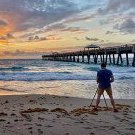
Light L16 - A Camera Breakthrough!
silvertonesx24 reacted to Trek of Joy for a topic
Interesting concept. I've yet to see one image that matches or exceeds the DR of the A6500 or A7rII. Quite frankly they still look like iPhone shots IMO. But I haven't seen actual raws from one either. I hope this succeeds, but the price - again IMO - means it will die a slow death once the initial shipments are fulfilled. Hopefully someone with deeper pockets will buy the IP and get the price point down.1 point -

Panasonic GH5 - all is revealed!
zetty reacted to AaronChicago for a topic
Yes there is a way. If you use the joystick you can highlight and change the numbers.1 point -
Small HD DP4 Still Legit in 2017? vs IKAN DH5
Juxx989 reacted to Edwin Cheng for a topic
Hi Juxx I have the small HD with loupe. I've not used other monitors but judging from specifications it does seem a little dated in terms of the features. No scopes, native resolution 800x480, focus assist (rather than peaking). At the time when I bought it my thinking was to shoot a short movie and I was looking into having a rig with cage and follow focus along with rods, so the loupe seemed to fit in with that theme. The dp4 with loupe mounted is quite big... Later I discovered that this style of filmmaking was not for me, I wanted something more agile, lightweight, run and gun style. I found that the monitor itself can still fit the bill, being relatively small in size at 4.3". It is a bit more real estate than the LCD screen that is built in to your average camera so I find that it does help with framing, and focus assist is good enough.1 point -
Yup, the low prices which both the D750 and D500 are reaching are unbearably tempting me....1 point
-

Single Focus Anamorphics
Caleb Corlett reacted to DBounce for a topic
You can use a 1.5x anamorphic which is designed for 16x9 and that should work pretty well with the A7SII. But TBH, I ditched my A7RII awhile back. While I could opt to use the Canon, I feel the GH5 is best for the task, as it is designed for anamorphic. The only thing it is missing is in-camera desqueeze... and since it is fairly trivial to add it, I cannot understand the omission. If they really wanted to go above and beyond they could add lens profiles also, for popular lenses. I would pay for such and upgrade, as I am sure many other would also.1 point -
Single Focus Anamorphics
Caleb Corlett reacted to zerocool22 for a topic
Well the A7S II is not the best camera for anamorphic shooting it has no 4:3 mode. I would opt a ursa mini 4.6k/pro or even a GH5. Single focus anamorphics lenses are not cheap though. You got the slr magic anamorphics, Around 2600€ per lens. But I don't like their look.I would go for some vintage lomo's. But they are also a lot more expensive. If you want to work with adapters. Get the Rectilux hardcore DNA and see video below for some cheap anamorphic adapters.1 point -

Single Focus Anamorphics
Tito Ferradans reacted to Justin Bacle for a topic
You should start by @Tito Ferradans 's single focus shootout video for the best single focus comparison ever !1 point -
The Bolex-Anamorphot 16/32/1.5x thread
funkyou86 reacted to Dick Sweeney for a topic
Heres some lens tests with the anamorphot - some come good easy with the focus others not...... the Sony Zeiss is SHARP ! and the AF handy. The Minolta 45 very small and renders well and close focus and sharp with nice flares. The Jupiter 85 is lovely - crazy organic - i think best for middle distance person with focus on them wide open ish. If its close to inifinity then the organic renders a bit too funky for my like. I need to test the Minolta 58 and the Canon 100 macro more........1 point -
Hi Ethan, couldn't agree with you more! As soon as I get a break from my "real" work I'm going to fire up the C100, A6300 and a Ninja Blade so I can analyze un-compressed HDMI data, as Eddie suggests. We all want the same thing. We all agree high dynamic range shooting in 8 bit has issues. How much? That's the question. Again, for all I knew when I started this post, I'm completely off. But I think the issue remains so I will continue work on it with everyone's help here.1 point
-
DIY Film Look
odie reacted to HockeyFan12 for a topic
I think it was Fotokem or one of their competitors I think. We saved money by going with a cheaper session (first light rather than best light) and a cheaper delivery format is what I was referring to, lower quality processing and scan. We were basically grading proxies. They wanted $50k extra for a proper scan, which would have been worth it, but it wasn't in the budget and the look of the film suffered for it, though I think we did well with what we had. The increase in budget for shooting film rather than video was between $100-$200k. I believe the budget for the feature was just under $1 million. I don't know more, I wasn't a producer on it, just worked in camera department. That does seem like a very good price. But even at $200 for a roll of 16mm film and $200 for development and scan (lower than I've ever seen available, but consistent with what you suggest) that's $400 for ten minutes of footage (inevitably the ends don't get used, or it would be 11 minutes). At a very conservative shooting ratio of 15:1, a 100 minute feature would cost $60,000 extra at those very low rates (which I still have yet to find). I agree, I have seen small features shot competently for under $500k and so $560k isn't that much more. But the extra costs in terms of support gear, monitoring, and lighting (500 ISO film is about as clean as 3200 ISO digital, you have a ton of over but your under is just dreadful) push things up much higher. I just can't figure out the math. Even if everyone is working for free, I can't imagine a budget under $200k for a 16mm feature. I know the story about Primer, but that's sort of the extreme example of a 1:1 shooting ratio and shooting in someone's garage. 99% of stories won't work with those limitations and the budget was much higher than that once it was polished up for a salable deliverable. What features have you shot on 16mm for under $5k? Were they small stories like that or were you able to scale up efficiently beyond that? Did you pay the crew? What gear did G&E gear and how big was the crew? I still can't do the math. I used to shoot a fair amount of 16mm (for student films and stuff, never professionally), and even back in those days when film was cheap it was still hundreds of dollars extra for a short exercise versus shooting digitally. Nevertheless, for the money, film is still a great deal and I like your idea of using a digital b camera sparingly. I still plan to shoot my next short on film, but I'm budgeting a few thousand dollars extra just for a 10-minute short and planning to shoot with a tiny tiny ratio.1 point -
1 point


